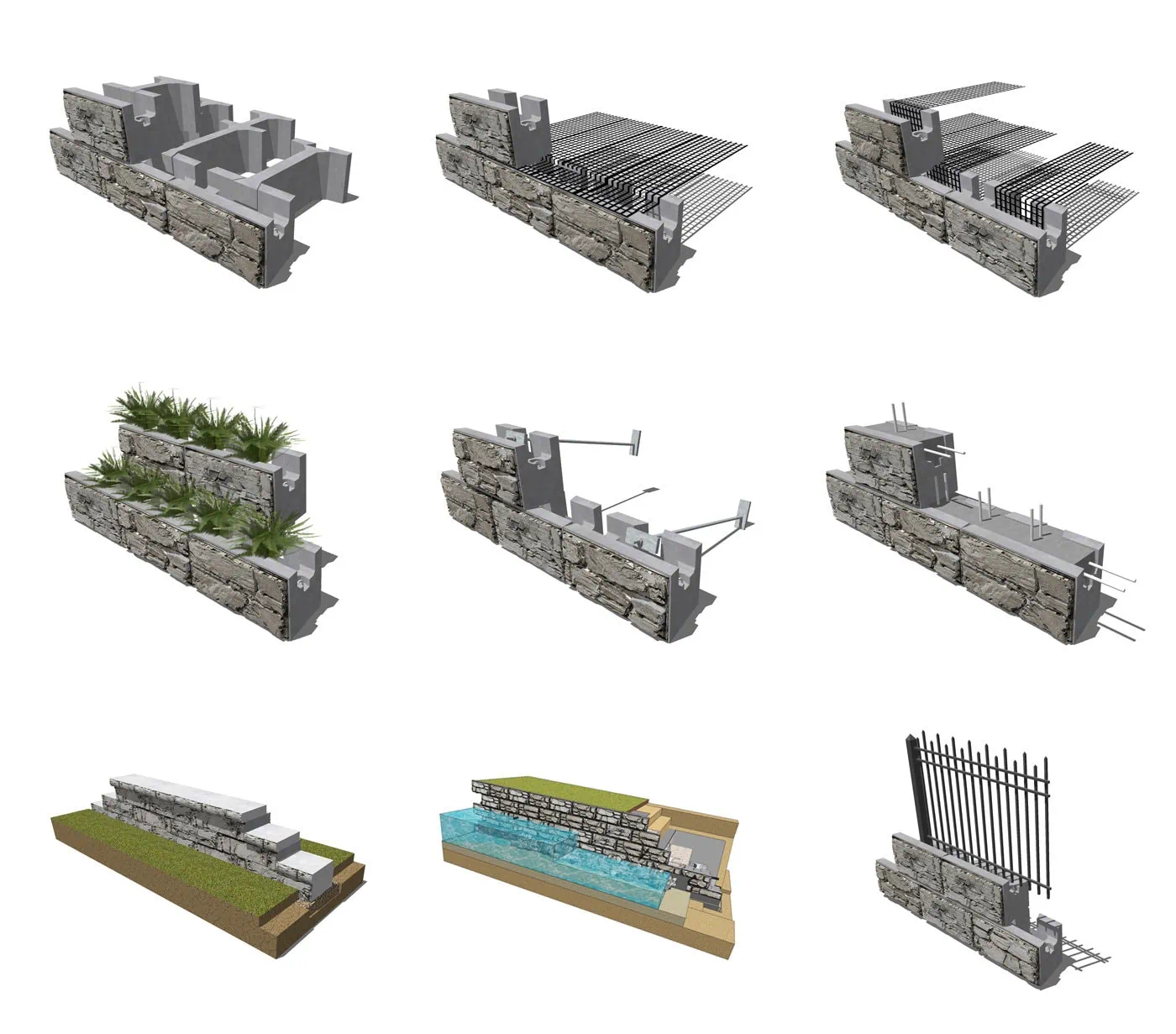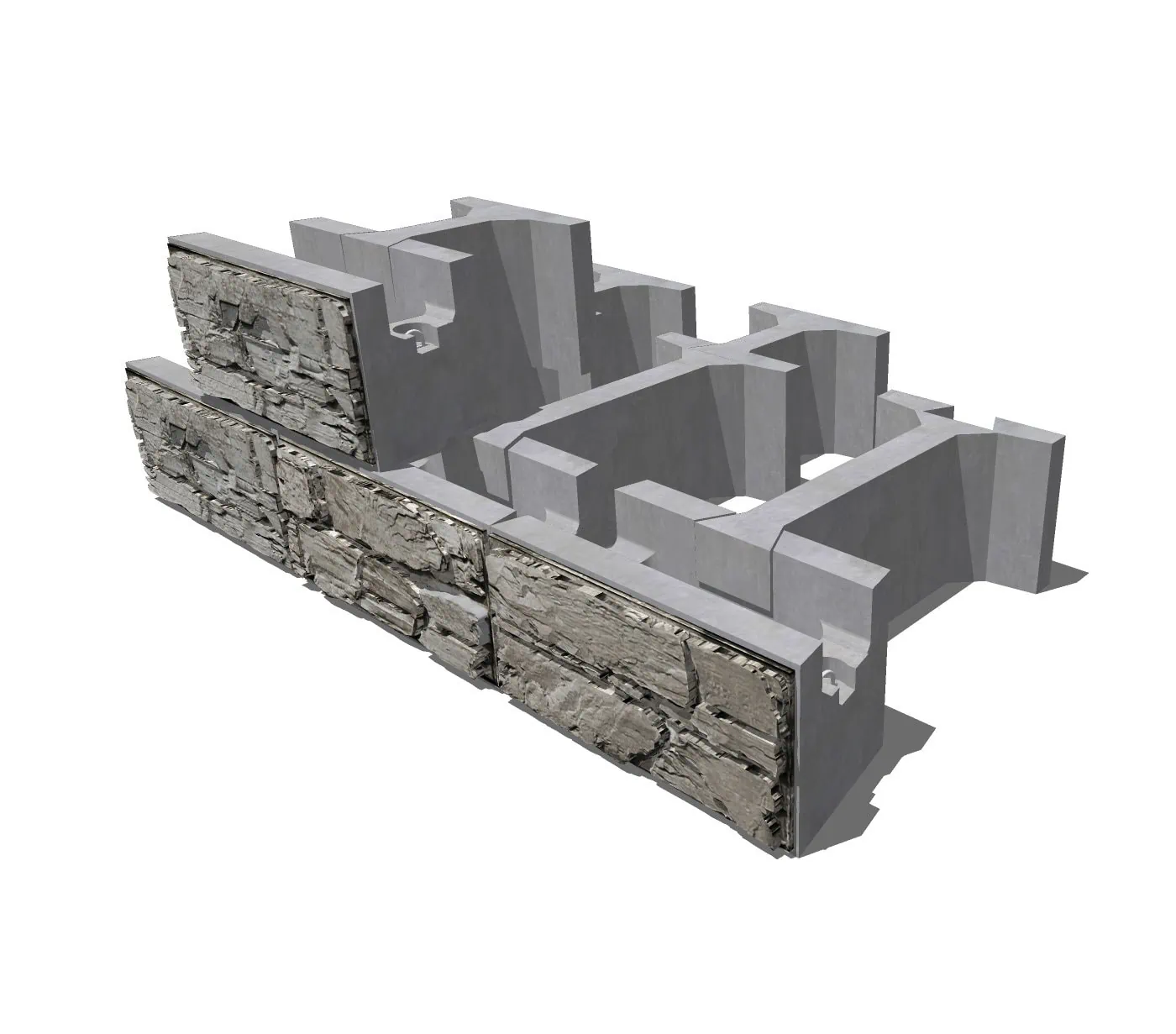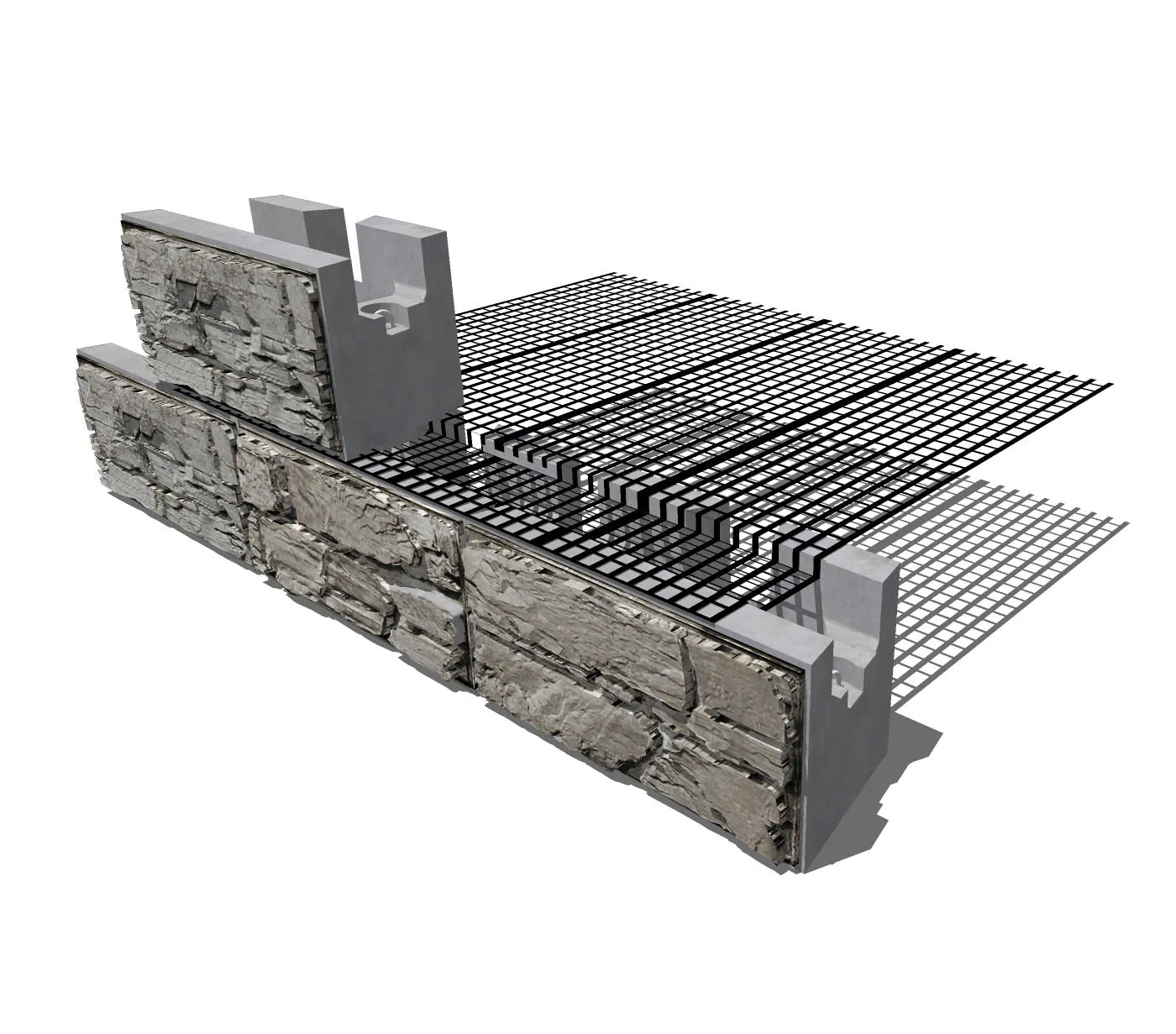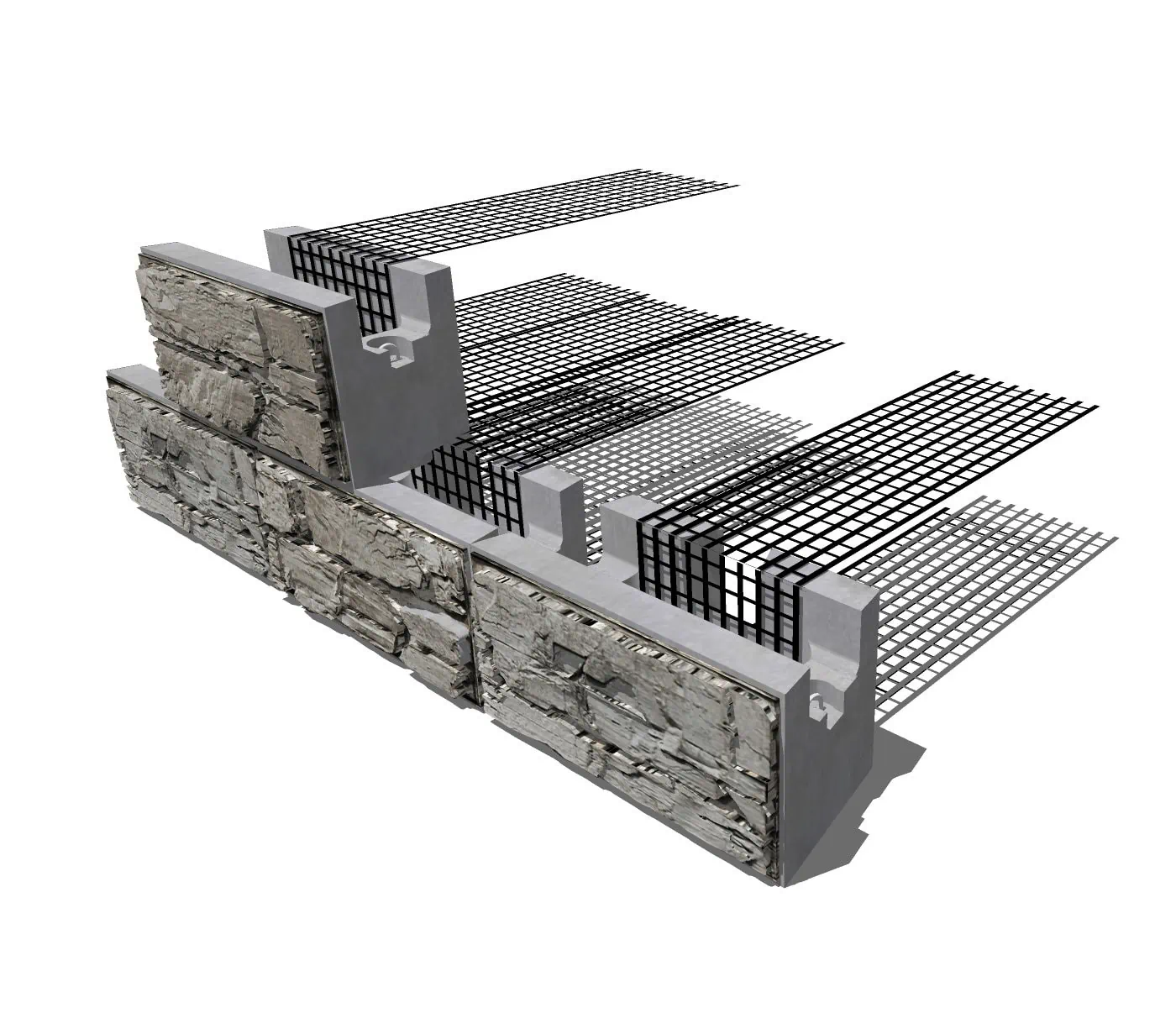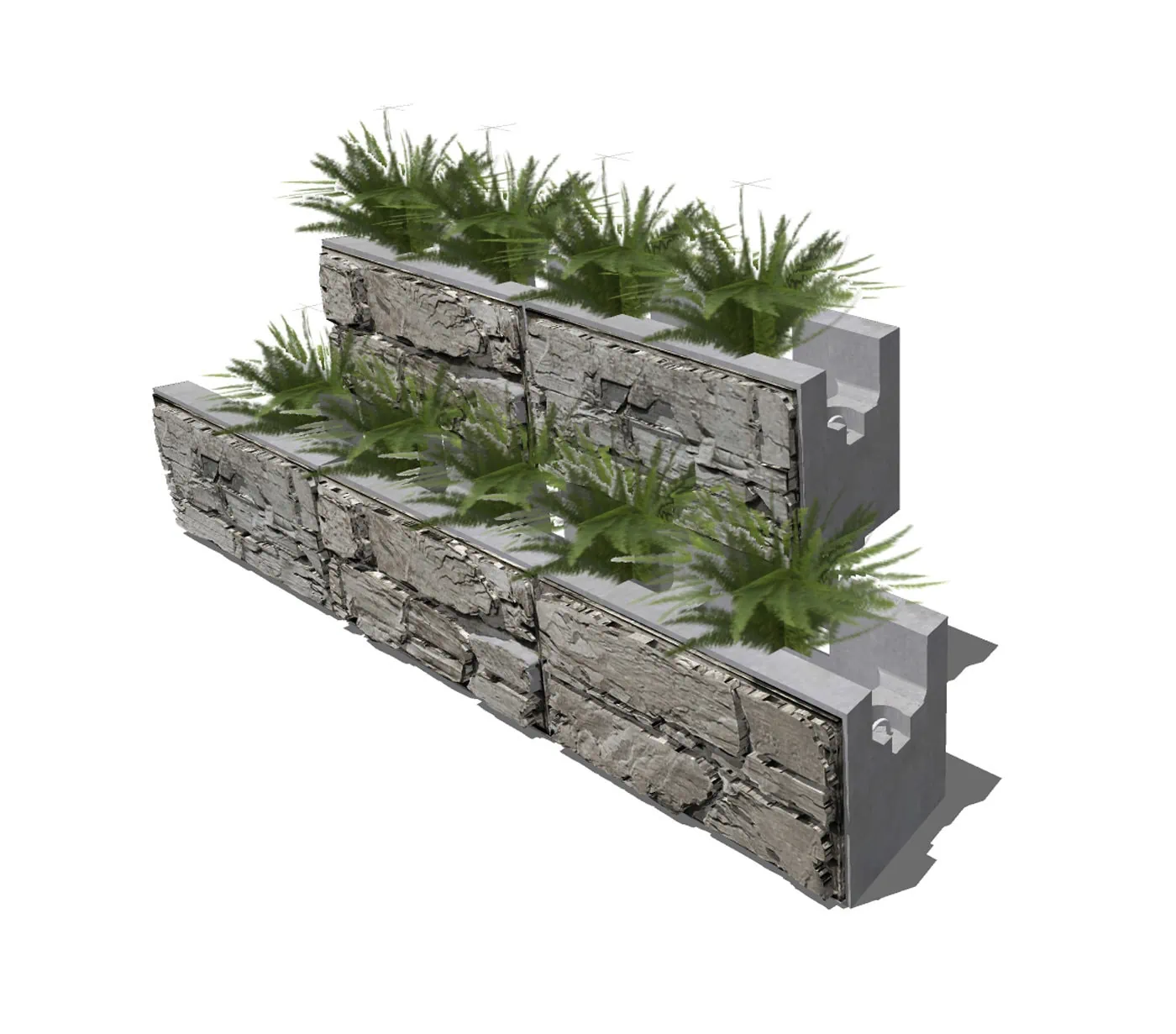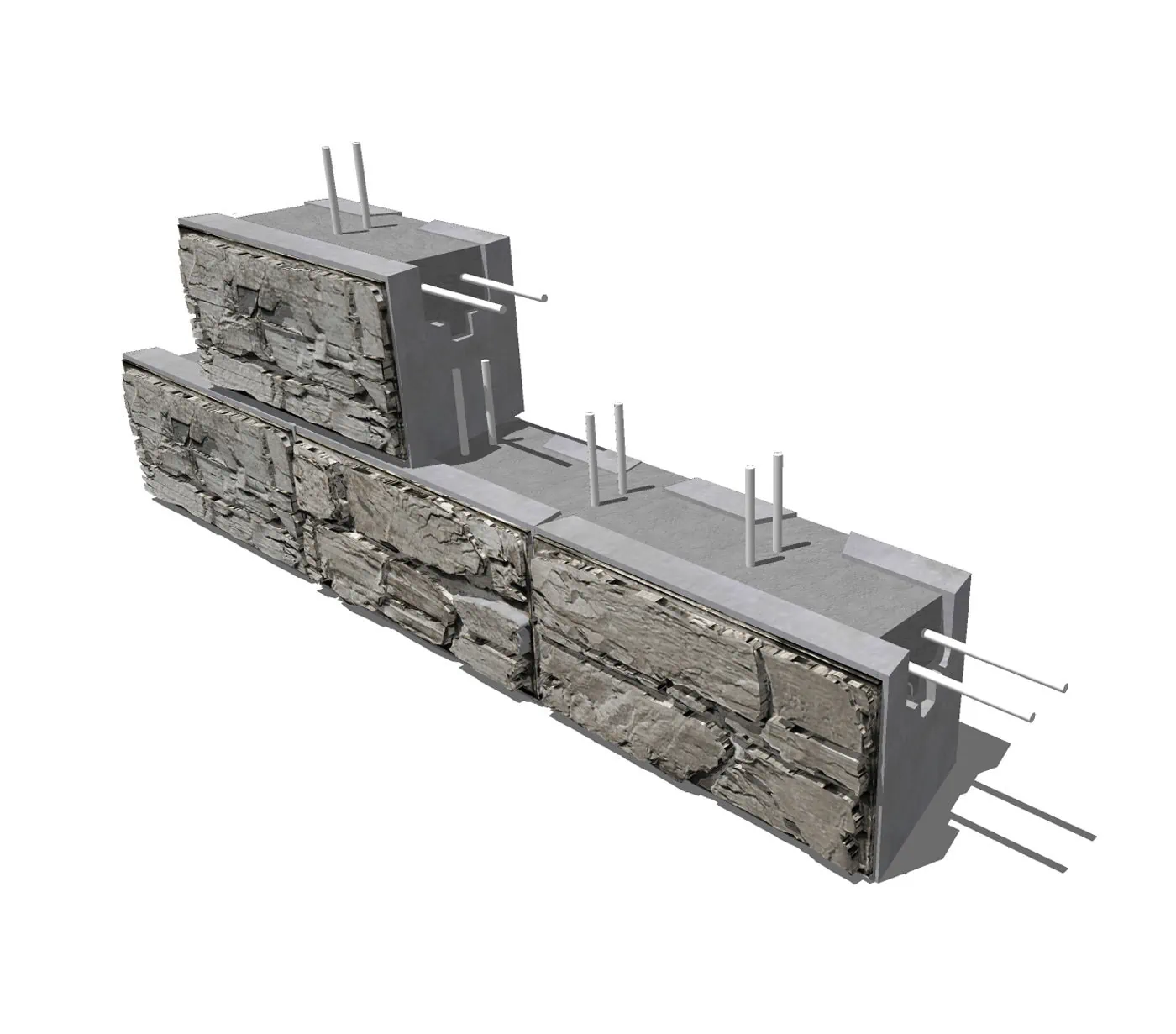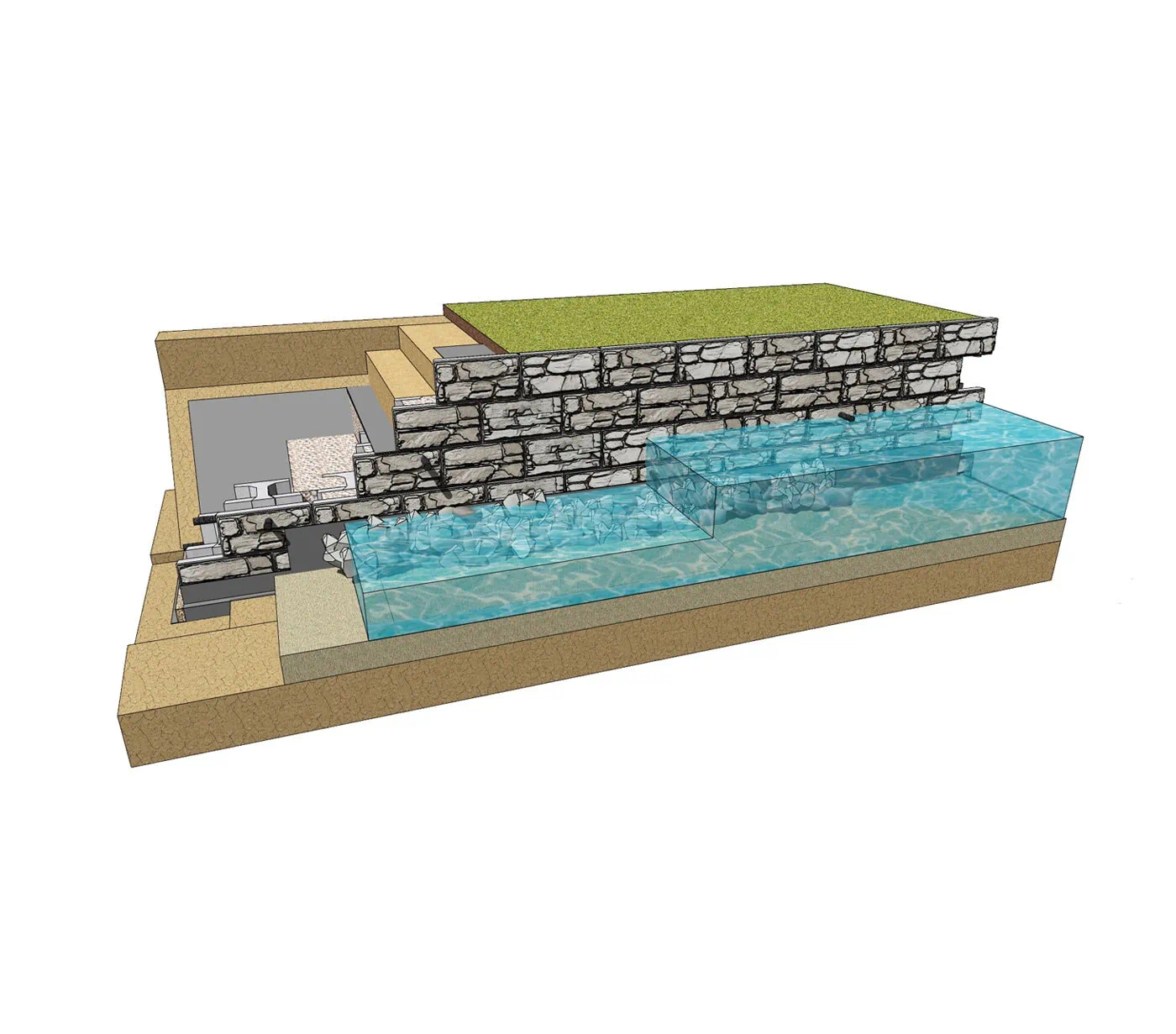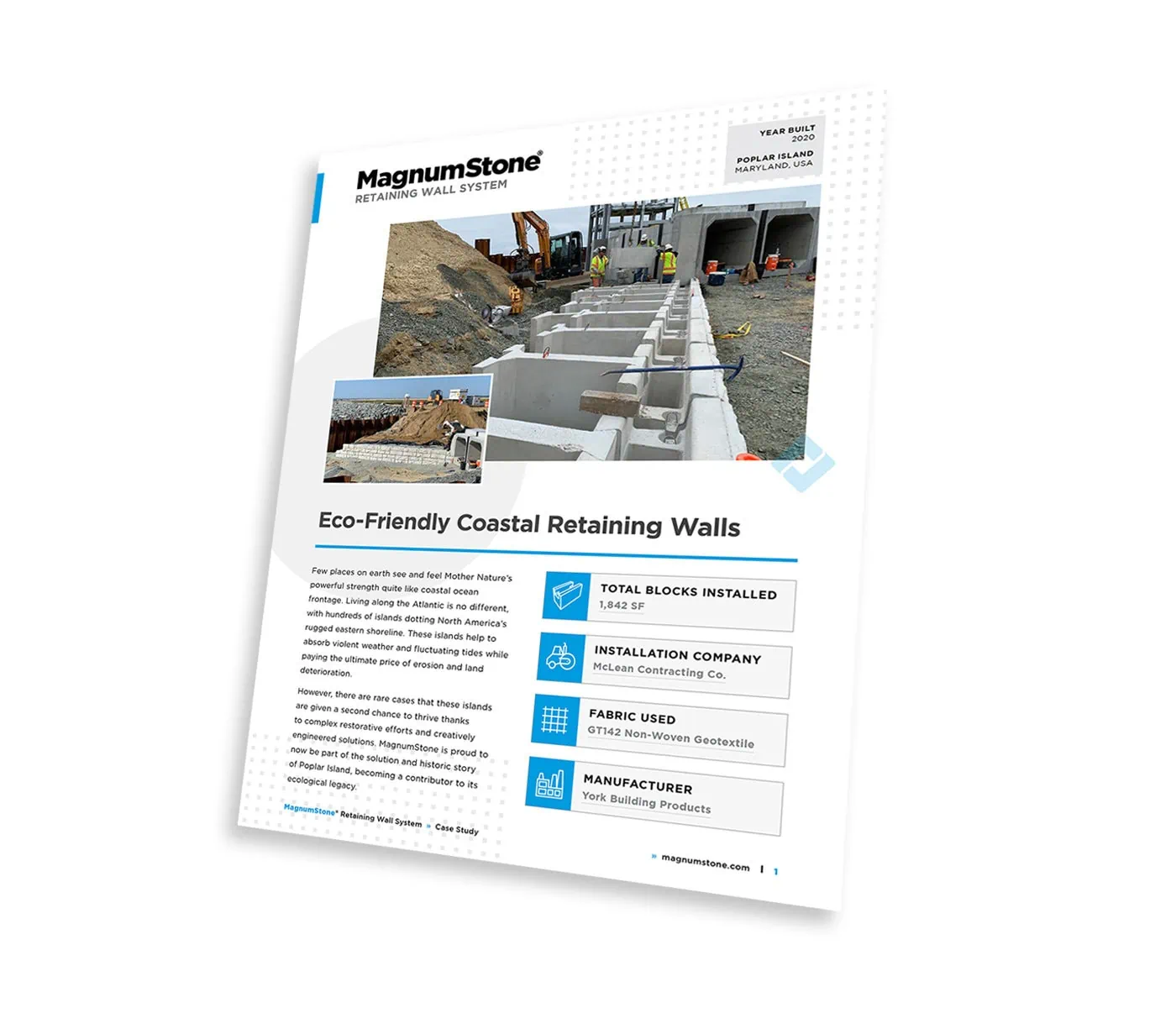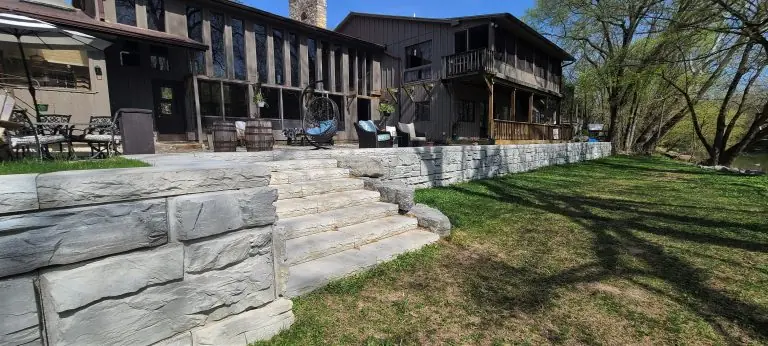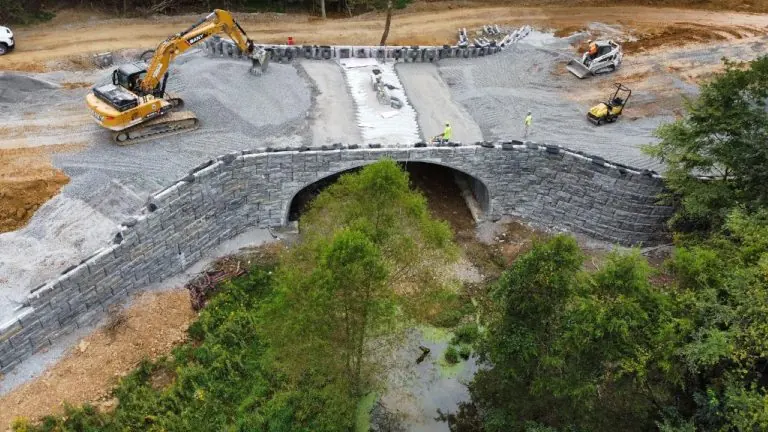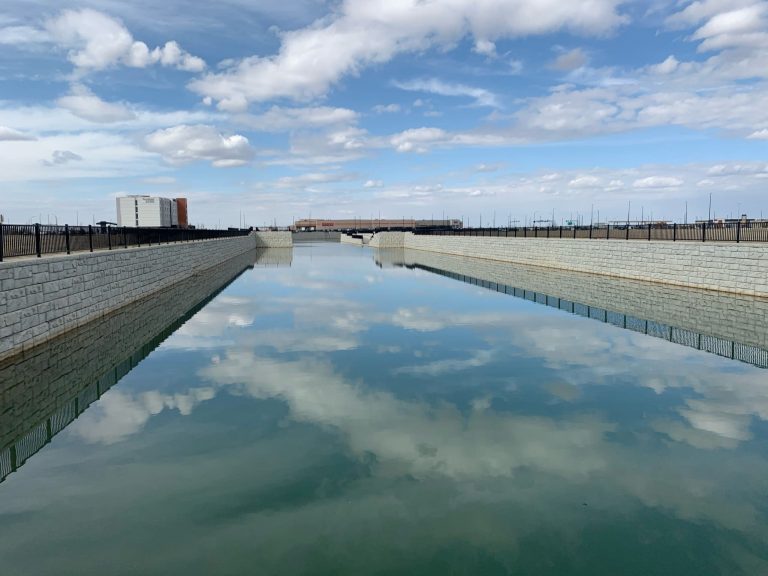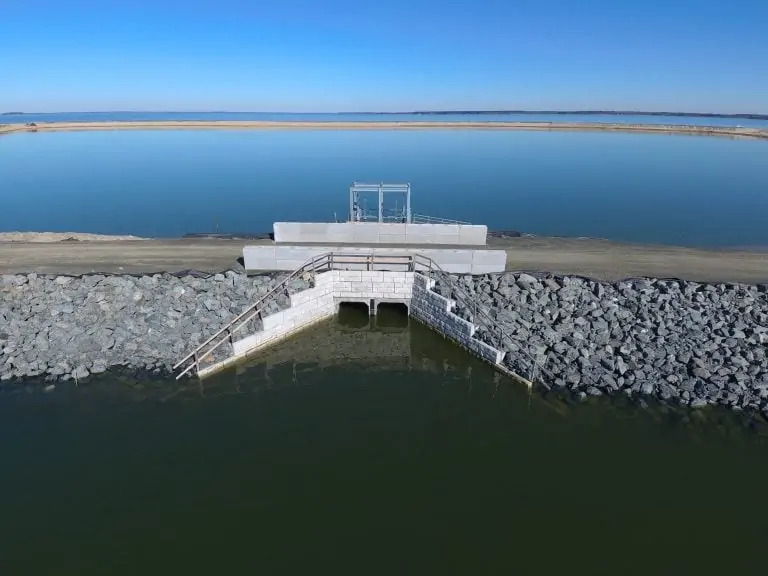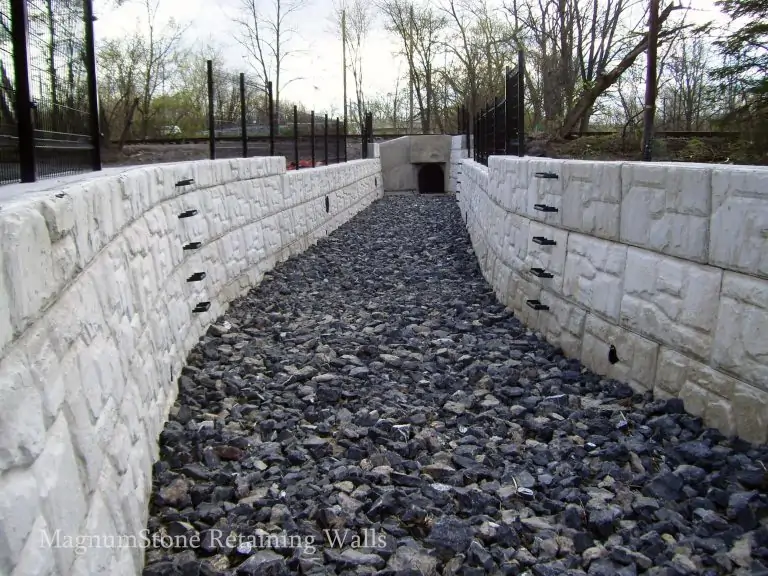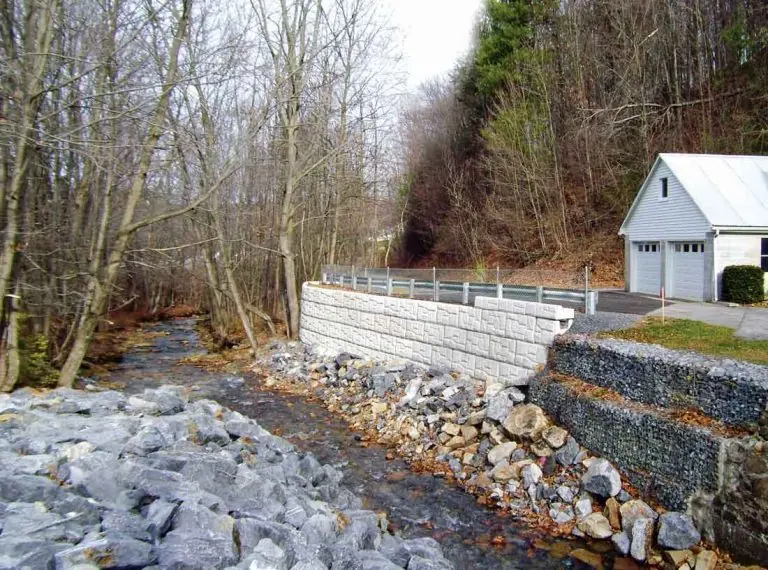Stormwater
Conveyance,
Drainage
Channels &
Stream Banks
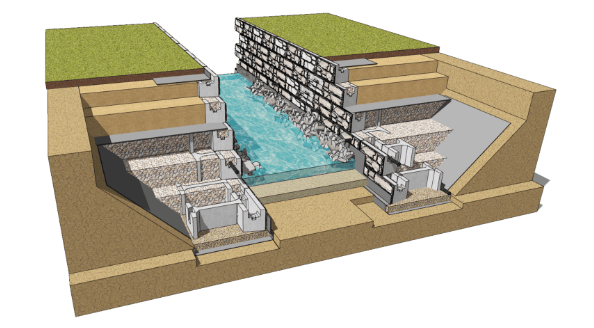


Proactive flood prevention measures have become essential for urban centres due to the rapid worldwide growth of infrastructure. Stormwater conveyance systems prevent erosion and scouring of land and infrastructure from fast-moving water. They also provide an initial filter for runoff debris before water moves downstream to other water channels. These systems collect stormwater from different sources and flow into other stormwater management systems (bioretention ponds and rain gardens) or directly into streams and reservoirs.
Stream Banks, Storm Drains, Street Gutter and Piping Systems, Inlets to Catch Basins Solutions
When thinking of “Stormwater Management Systems”, storm drain canals – with street gutters as the main source of water – typically come to mind. Storm drains are large, permanent, constructed swales or canals with many contributing water sources. Runoff is intentionally directed toward these drainage and conveyance channels, which are built to withstand large volume storm surges. After the runoff’s arrival at the storm drain or inlet’s graded stream banks and streambed, it commonly flows downstream to a safer aquatic destination.
During severe storms, stormwater conveyance systems receive, contain and funnel water away from pipes and street gutters. The banks of these waterways are frequently embedded with low-absorption, weatherproof retaining walls on each side. The reason for that is when dealing with massive, intermittent quantities of rapid-moving water, retaining walls provide much-needed strength and durability. These critical drainage channels are frequently lined with riprap (large stone) to slow runoff and filter out sediments and debris.
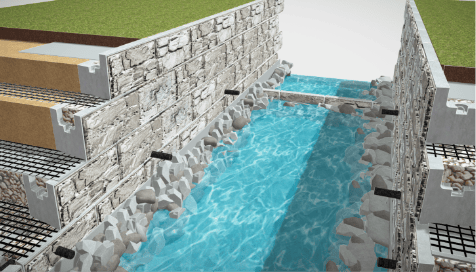
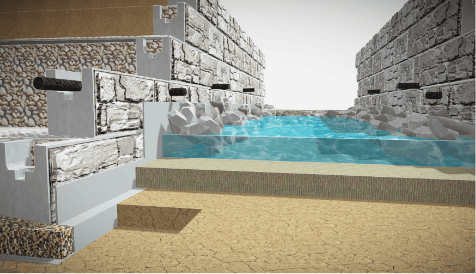
Design Considerations for Dry Pond
(Detention) Retaining Walls
-
High Water Mark – The average maximum height that a body of water is expected to reach during a period of flooding.
-
Low Water Mark – The average low water elevation that stays consistent and is typical throughout the year.
-
Rip Rap – Rip rap should be used along the toe of the walls to slow water flow, protect the wall facing, and to prevent scour. Additional scour analysis and rip rap sizing calculations should be completed separate of the wall design analysis.
-
Soils – A full soils analysis report should be prepared using boring logs to determine the suitability of the site soils. A Geotechnical Engineer should be consulted to perform the analysis and report findings.
-
Drain Gravel – Drain gravel is used in the retained infill zone or reinforced zone when using geogrids. A well draining coarse gravel (often referred to as AASHTO #57 stone) with little to no fines should be used 1 ft (304mm) above the high water mark. This material can be used inside the hollow cores of the retaining wall units and can also be used to backfill behind the wall.
-
Perforated Drainpipe – A perforated drainpipe, also known as a weeping tile, should be used for proper drainage behind the wall face. These pipes typically have a 4” (101mm) diameter and may be sock wrapped. All drainpipes may outlet (daylight) through the wall at a minimum of every 30 ft (9.0 m) on center. The elevation of the first drainpipe should be above the high water mark by a minimum of 6” (152mm). A second drainpipe should be added above the low water mark. Additional back drain(s) may be added where necessary at the discretion of the Design Engineer.
-
Filter Separation Fabric – Filter fabrics, also known as geotextile, should be used to separate the fine soils from the drainage layers. They may also be used between the backfill material and retained material along the excavation cut. Wrapping the leveling pad will assist with scour and erosion of the base leveling pad.
-
TOW – Top of retaining wall elevation. Typically, the top of the cap; shown in plan views and wall profiles and are essential for construction.
-
BOW – Bottom of retaining wall elevation. The base of the wall where the ground level meets the retaining wall; shown in plan views and wall profiles and are essential for construction.
Why Use Stormwater Conveyance Systems?
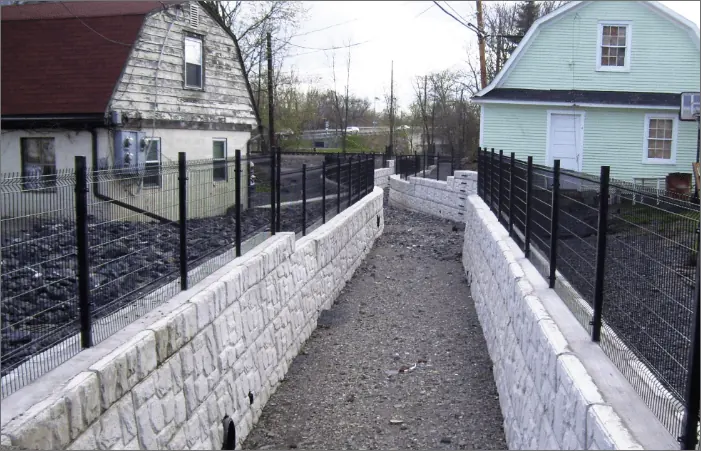
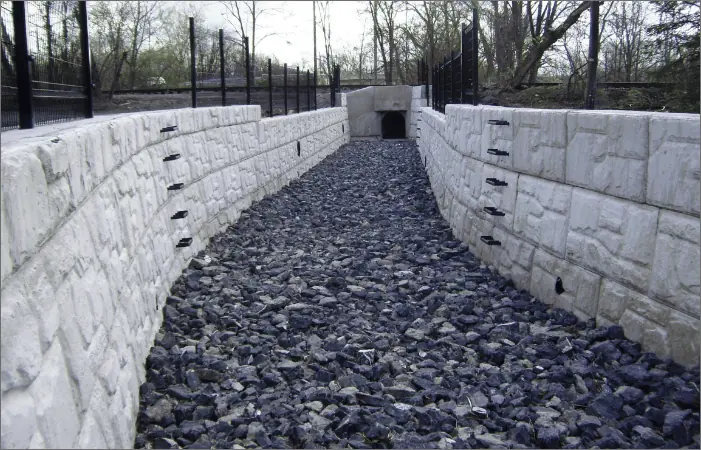
The importance of conveyance systems is rooted in conservation. While household rainfall conveyance systems are an excellent solution for gardens and soil via infiltration, stormwater conveyance systems and drainage channels help control larger volumes of water which have the potential to wipe out infrastructure.
Drainage systems are imperative to massive urban areas, primarily functioning as erosion control structures and flood protection. Rightfully, people often associate stormwater drainage channels with images of the famous Los Angeles River, which is a perfect example. This waterway helps mitigate flooding and erosion by conveying water for miles until it reaches its outlet to receiving waters; in this case, that is the Pacific Ocean.
But not all drainage channels have to be iconic, world-renowned systems, of course. MagnumStone retaining walls perform the same water conveyance functions for projects of any size or complexity. Our blocks serve as excellent, secure and long-lasting reinforced stream banks for critical drainage systems. Additionally, the blocks are perfectly suited to create weirs along these waterways which control water flows.
Features & Attributes of Stormwater Conveyance, Drainage Channels, Stream Banks
Stormwater Conveyance and drainage tend to be noticeable within communities and urban areas. These open-surfaced, engineered canals and swales are designed to receive, control and guide water downstream. Concentrated waterways of this kind are capable of handling large, sporadic volumes of water and are highly effective during storm surges. These applications can be fenced off at the top of the drainageway to prevent objects or people from entering the water channel.
Surface runoff comes mostly via street gutters and underground piping systems, where water is lead to these centralized drainage channels. It is always recommended that the drainage pipes in the retaining wall and clean gravel backfill remain a minimum of 12 inches (300 mm) above the high water mark for any water application, including stormwater drainage channels. This area is wrapped in a filter fabric to prevent fines from migrating into the clean drainage areas.
Stormwater channels are typically formed in canal shapes or with steep streambanks, which are lined with retaining wall blocks to prevent erosion and scouring. Since these retaining walls face tough water application conditions, they may also be further reinforced by geogrid. Another form of conveyance system are step pools, elevated water pools engineered to fill from the top and overflow into the next pool below, thus slowing water speeds and filtering pollutants.
The streambeds of these waterways have riprap or vegetative bases which control water flows. These features act as the first filtration or settling area for sediment sand debris from the infrastructure runoff. Stormwater drainage channels can help treat water and remove contaminants. Cleaner water then flows into larger receiving waters such as rivers, streams or lakes.
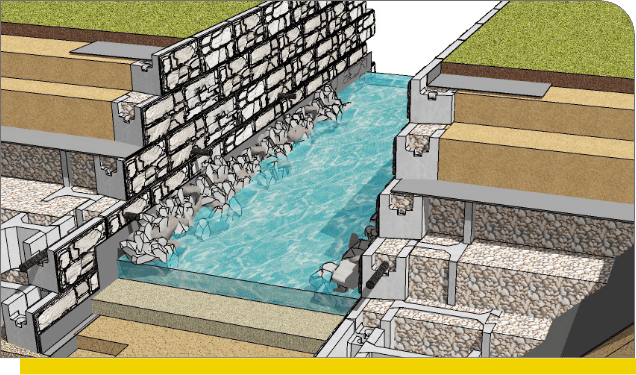
learn more about how we can help you utilize the
MagnumStone advantage!
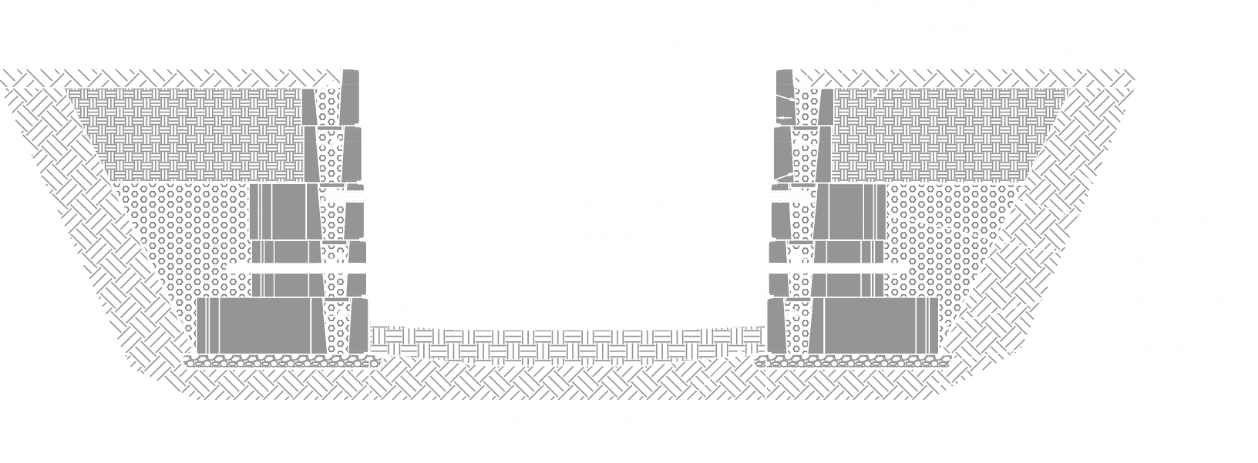

Gravity Solution
Geogrid Solution
Load times may very depending on internet speed.
DOCUMENTS & DOWNLOADS
All related documents for this design option are listed here, or to view our entire downloads catalog click here
-
Stormwater Conveyance Documents
-
Related Design Details
learn more about how we can help you utilize the
MagnumStone advantage!
MagnuMStone Advantages
-
An eco-friendly product, the hollow core design uses 40% less concrete than solid concrete systems
-
MagnumStone units are backfilled with clear crush gravel for exceptional drainage and permeability
-
Free-flowing drainage system built into and behind the blocks, to avoid sediment buildup and blockages
-
Gravel-filled MagnumStone blocks provide weighted strength for gravity walls, or with the help of geogrid for reinforced walls
-
Natural facing rejuvenates and enhances the look of temporary stormwater storage systems
-
MagnumStone’s terraced and planter retaining walls provide environmentally friendly elements and more stylish aesthetics thanks to the block’s hollow core design
-
MagnumStone can either be used for a geogrid reinforced wall or a gravity wall for these simple or complex water applications
-
MagnumStone’s gravity extenders require far less excavation area and maximize land use
-
High-quality precast wet-cast concrete is weather-proof and minimizes water absorption
-
MagnumStone’s strength can withstand high pressures and loads of close-proximity infrastructure (parking lots, roads, railways, buildings, etc.)
-
Perforated drainpipes are strategically placed along the retaining wall to guide water runoff
-
Graded land at toe of the retaining wall diverts water runoff away from the retaining wall and promotes even water dispersion
-
Retaining walls are often embedded above or slightly below the surface of the water
-
Lightweight blocks are quick and easy to install, excellent for tight excavation spaces, making better use of land and properties
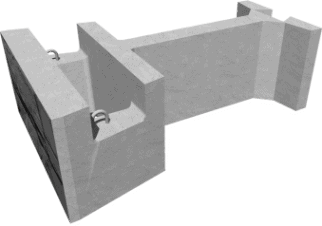
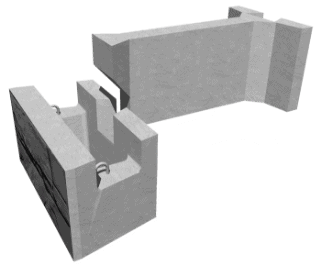
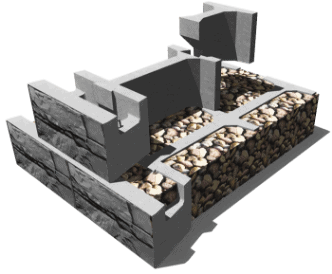
StormWater Case Studies
Every MagnumStone project has a story behind it, not just backfill and drainage channels. Our extensively library of detailed MagnumStone case studies feature impressive versatility and retaining wall successes.

